Table of contents
The potato ( Solanum tuberosum L. ) is a common staple food with a high starch content. Most of the vitamins are found under the skin. Nevertheless, you should refrain from eating the skin raw , except in small amounts, as it contains solanine. Green areas indicate increased concentrations and should be cut out.
Use in the kitchen:
The potato plays a major role in traditional cuisine, whether in cooking, roasting, baking or deep-frying. If you use raw potatoes to prepare a dish, you will get a different result than with pre-cooked ones. It changes in terms of consistency, appearance and, last but not least, taste.
Potatoes are also edible and drinkable raw (potato juice), but are not suitable for consumption in large quantities for two main reasons. Firstly, the starch they contain is difficult to digest when uncooked. Secondly, the ingredient solanine causes symptoms of poisoning in humans after consuming large quantities. 19 Solanine is found in the green parts of the potato, in any shoots, in the skin and in less concentrated form in the potato pulp. 4,30 It is therefore advisable to remove the skin if you want to eat potatoes raw (except for small quantities). For further information, please refer to the chapters on ingredients, health aspects and dangers.
In general, make sure that you use fresh tubers that are free of bruises and have no sprouts or green spots. We recommend cutting out the green spots generously, and throwing away any that taste bitter. 19 When cooking, it is best to prepare the potatoes with the skin on and only steam or boil them gently, as this is the best way to preserve the nutrients. Since solanine is water-soluble, you should throw away the cooking water and not reuse it. 4,19
To avoid the development of the toxic substance acrylamide through the Maillard reaction, potatoes with little starch, i.e. waxy varieties, are used for fried or deep-fried dishes. In addition, the lowest possible heat is used to achieve the desired result. 2 Recipes that require a high heat preparation should preferably be served rarely, as unhealthy trans fatty acids can develop in the fat/oil used when frying or roasting.
Potatoes are divided into different cooking types based on their cooking behavior. A different cooking type is selected depending on the intended use. The starch content depends on the variety, weather and maturity and often varies. The values are different depending on the source - so they are given here as approximate values:
- Which types of potatoes are waxy? Waxy potatoes have a rather moist flesh and are usually long or oval in shape. The starch content is rather low at around 10-14% 1.29 , which means that the skin remains intact during the cooking process and does not burst. Waxy potatoes include Charlotte, Nicola, Linda, Agata (early potatoes). These varieties are ideal for preparing potato salad, gratin, fried potatoes or jacket potatoes .
- In contrast , waxy potatoes have a starch content of around (13 or) 14-16% 1.29 and are therefore average. They are suitable for many recipes. Well-known varieties include Laura, Marabel and Toscana. These tubers can be used to make mashed potatoes, fried potatoes, jacket potatoes and baked potatoes.
- Floury potatoes almost fall apart after cooking and have the highest starch content: between 16 and 18%. 1 Popular varieties include Ackersegen, Adretta, Agria, Gunda and Russet . They can be used to make dishes such as mashed potatoes, dumplings and gnocchi. They are also suitable for soups and stews.
Can you dry raw potatoes? Raw potatoes are easy to dry. To do this, peel the raw (organic) potato into thin slices using a vegetable peeler. Then soak them briefly in salt water so that they don't discolor and to reduce the solanine content. Then dry them well and put them in the dehydrator or oven. The dry potato leaves complement soups or stews, but are also suitable as a crunchy snack between meals.
Vegan recipe for raw potato juice:
Ingredients : For 1 dl of juice you need 4 medium-sized organic potatoes without germs, green spots or bruises.
Preparation : Peel the potatoes generously. Grate them with a fine kitchen grater (such as the Bircher muesli grater) into a strainer or a clean kitchen towel. Now squeeze the grated potato mass through the cloth into a bowl or directly into a glass. Consume the juice fresh, as it quickly oxidizes and begins to taste bitter. 7 It is easier to extract raw potato juice with a juicer.
Recipe for Rösti made from raw potatoes:
Ingredients (for 4 people): 1 kg potatoes (cooking type: waxy, e.g. Bintje), 1 teaspoon salt, 3 tablespoons clarified butter (boiled butter) or rapeseed oil for the vegan version.
Preparation : Peel the potatoes, grate coarsely and season with salt. Leave to stand for 10 minutes. Then squeeze out a little. Pour away the water. The potato mixture should be moist, no longer watery. Heat a non-stick pan with 2 tablespoons of clarified butter (or rapeseed oil). Add the potato mixture. Press down gently and form into a cake. Fry briefly. Fry with the lid closed and over a medium heat for 15 minutes. Shake the pan gently every now and then to loosen the rosti at the edge and prevent it from sticking to the bottom of the pan. After 15 minutes, loosen the rosti from the edge and bottom of the pan and turn it carefully (over a plate or in flight). If necessary, add another 1 tablespoon of cooking fat before putting the turned rosti back in the pan. Fry the second side for about 15 minutes as well. The rosti should be golden and crispy on both sides and cooked through to the middle. Place on a plate and serve immediately or keep warm in the oven at 80 °C.
Vegan recipes with potatoes can be found under the note: " Recipes that have the most of this ingredient ".
| Not only vegans or vegetarians should read this: Vegans often eat unhealthily. Avoidable nutritional mistakes . |
Shopping - where to buy?
Potatoes are available all year round, regardless of the season, at all food retailers such as Coop , Migros , Denner , Volg , Spar , Aldi , Lidl , Rewe , Edeka , Hofer etc. Depending on the season, you will find different varieties on offer. At the weekly market In the region there are also small quantities to try out, because the diverse varieties differ not only in their appearance, shape and color, but also in taste and consistency.
When buying potatoes, make sure that they look crisp and fresh, are neither shriveled nor soft, and have no bruises. It is very important that there are no green spots and that no roots have developed. Without these signs, you can assume that the storage was ideal.
When it comes to potatoes, it is particularly worthwhile to pay attention to organic quality. These contain 30% less nitrate than potatoes from conventional cultivation. 7 In addition to this positive effect, the organic tuber also has a longer shelf life and impresses with its fine, nutty aroma. Both of these are due to the slow growth due to less nitrogen being added and therefore a lower water content.
Ready-made organic potato juice is available for purchase in health food stores . This juice oxidizes less quickly than juice made at home.
Storage:
How do I store potatoes correctly? If you want to store a normal household quantity for a few weeks, you should quickly remove the potatoes from the plastic bag. Either put them in a cardboard box where the potatoes can lie next to each other. Or in a bag made of natural, airy material such as jute or coarse linen. It can also be an unpainted clay pot with a lid. It is important that the potatoes are stored in the dark and that there is sufficient ventilation. 9,10,11
If you want to keep the raw potatoes for a longer period of time, it is best to store them in a dark, cool and well-ventilated room. The room temperature should be between 5 and max. 10 °C to avoid unwanted sprouting of the potatoes for as long as possible. If the temperature falls below 4 °C, the taste of the potato changes as the starch is converted into sugar (a sweet aroma develops). Cellars with wooden shelves are ideal for storage. Boxes through which the air can circulate are also possible. If the cellar has a window, you should darken it and it is also better to cover the tubers. Airy cloths made of jute or linen are recommended for this. Do not stack too many potatoes on top of each other as they will quickly develop bruises and this will accelerate the rotting process.
In any case, potatoes must be stored separately from fruit and other vegetables, as these can accelerate the ripening process. Store unwashed potatoes, as washing them causes unwanted bruises. For long-term storage, you must check the potatoes once a week and remove any sprouted or discolored ones. These are only suitable for seed. Tubers with soft spots or other signs of mold and rot should also be sorted out immediately. When checking, the tubers should also be rearranged, which ensures that the stored goods are optimally ventilated. Unwashed potatoes can be stored for a maximum of 7 months. At this point, the first early potatoes are already ready to be harvested again.
There is an old method for storing potatoes and root vegetables in the garden. This is the so-called "earth pile". This earth refrigerator consists of a hole in the ground in the garden filled with sand and straw. Here too, the temperatures must be maintained. 9
Unfortunately, raw potatoes are not suitable for freezing because the starch in the frozen state turns into sugar. In addition, the large water content (79.2%) destroys the cell structure of the potato by forming ice crystals. This is why potatoes have a glassy, mushy consistency when thawed. 12
If you have leftover potatoes, preserving them by drying is an option.
Ingredients - nutritional value - calories:
The raw potato consists of almost 80% water and contains hardly any fat. In general, the potato has a reputation as a good source of calories without making you fat. This is because the calorie content of 77 kcal/100g is considered low for a starch source. 6 In contrast, uncooked white jasmine rice , for example, contains 365 kcal/100g. However, the calories are mainly contained in the starch. Even though the potato keeps you full for a relatively long time compared to white rice or pasta, 6 we recommend eating lots of vegetables, seeds and nuts as well as whole grain side dishes or pseudocereals for a balanced, healthy diet.
The protein content is considered low at 2 g/100g. The biologically high quality makes it interesting, however, as the protein in this composition is very easily usable by the human body. 13 White, uncooked jasmine rice contains 7.1 g/100g of protein; after cooking, this proportion is reduced to a similarly low value due to water absorption. Of the essential amino acids, tryptophan is the highest at 0.02 g/100g, covering around 8% of the daily requirement. For example, butternut squash contains 0.01 g/100g, which covers 3% of our daily requirement.
One essential nutrient that potatoes provide us with in significant quantities is potassium . At 425 mg/100g, this covers 21.0% of our daily requirement. White jasmine rice has a much lower amount of potassium at 115 mg/100g. Raw, peeled barley actually provides a little more at 452 mg/100g. However, the amount is reduced if you cook the potatoes in water, as the element potassium binds quickly with water. 14
Potatoes do contain various vitamins and minerals, but not in the overwhelming amounts that are often quoted. Let's take vitamin C , which at 20 mg/100g is actually higher than, for example, apples with 4 mg/100g or apricots with 10 mg/100g. This means that 100 g of raw potatoes would cover a quarter of the daily requirement. However, vitamin C is sensitive to heat and dissolves in water. Boiled potatoes only contain 13 mg/100g, which corresponds to 16% of the daily requirement. With a varied diet with a focus on plant-based foods, vitamin C is one of those vitamins that is easily covered.
With 0.3 mg/100g, potatoes provide 21% of our average daily requirement of vitamin B 6 . Raw pointed peppers contain 0.42 mg/100g of this vitamin and thus cover 30% of our daily requirement. Vitamin B 6 is contained in many of our foods, so we hardly have to worry about a deficiency.
The complete ingredients of potatoes, the coverage of the daily requirement and comparison values with other ingredients can be found in our nutrient tables. In the article Nutrients explained you will get a detailed insight into the topic. CLICK FOR before the text.
Health aspects - effects:
How healthy is the potato? The main component of the potato, besides water, is starch. This consists of 70-80% amylopectin and 20-30% amylose. 15 Both are polysaccharides (also called multiple sugars) that have different compositions. Our body must first break down the starch into the simple sugar glucose that is accessible to our metabolism. This digestive effort explains why the pulp of the potato keeps us full for longer than pasta or white rice, for example. The present study (2018) 6 refers to contradictory information regarding nutritional content and health value and reveals that the method of preparation should be included more in scientific studies.
If you cool the potato after cooking, the amylose contained in the starch turns into what is known as resistant starch. 3 As our body cannot absorb this, the energy content is reduced by this process. However, of the starch contained, amylose is the smaller component at 23% compared to amylopectin at 77%. 3,6 This explains why the reducing effect of cooling the food has no significant impact on the calorie count.
The protein in potatoes is biologically high-quality. 13 This means that when we process them, we hardly produce any waste products that can be passed through the kidneys, which often occur with proteins of a different composition, such as meat. This relieves the strain on our kidneys, which is particularly important when kidney function is impaired. All essential amino acids are found in potatoes and in good proportions. Our body therefore uses all of the protein contained in potatoes. The ratio of amino acids can also be optimized by combining them with corn or other types of grain. 16 The optimal ratio of essential amino acids is important for our cell metabolism, skin and muscle development and maintenance.
The ratio between the potassium and sodium contained is beneficial, especially for people who suffer from high blood pressure or cardiovascular problems, as these minerals are jointly responsible for maintaining the osmotic pressure in cells. Potassium is also involved in regulating the water and electrolyte balance and in maintaining the acid-base balance. 17
Potatoes contain substances that have a calming effect on our stomachs. Various studies at the Hoffmann-La-Roche Laboratory in Basel and at the University of Göttingen (Germany) have shown that potatoes contain various benzodiazepines. These calming substances are often used in commercial tranquilizers in the pharmacy. These natural tranquilizers also have a local effect on the stomach and help to relax. Therefore, potatoes, especially in puree form, are a quick remedy for hyperacidity, gastritis, stomach ulcers, gastric prolapse, nervous stomach and whenever there are problems with digestion or with the stomach in general. Of course, the way they are prepared determines how healthy and beneficial the potato is. Deep-fried foods or foods fried in a lot of oil are just as harmful as combining them with meat. In order to digest oil and meat, the stomach has to trigger certain secretions that put more strain on it, which puts the positive effect of the potato into perspective. 16
Because the potato is alkaline, it is able to neutralize excess acid. It has an alkalizing effect in the stomach, blood, and urine. The soft consistency of the potato relieves the stomach of its digestive work. 16 The freshly squeezed juice of the raw potato also has a healing effect on various stomach ailments.
Dangers - Intolerances - Side effects:
Solanine and other alkaloids in potatoes can lead to poisoning if consumed in large quantities. 19 In order to experience the first symptoms of poisoning, an adult needs to consume 200 mg. This amount corresponds to around 2.8 kg of raw, unpeeled potatoes of the new varieties with 7 mg of solanine per 100 g. However, this side effect does not occur when consuming a normal portion size. This is mainly because the modern potato varieties available on the market today have largely been bred out of the content. In 2018, the German Federal Institute for Risk Assessment recommended reducing the content from the previous maximum of 20 mg/100g to a maximum of 10 mg/100g. The reason for this is a case of poisoning in 2015. 19
The potato produces increased amounts of solanine when exposed to too much light, 31 which can be seen by the green discoloration. This is either because the potato grows too close to the surface or because of exposure to light during storage. The solanine content also increases when it is pressed and when the potato sprouts. Solanine is heat-resistant, 30 but is reduced when the skin is removed and in water, for example when preparing boiled potatoes. 4
If you heat the potato to a high temperature, for example to get a crust, as with fried potatoes, hash browns or deep-fried chips, the undesirable acrylamide is formed by the amino acids asparagine and glutamine contained in the potatoes. This crust formation is also known as the Maillard reaction. 2 This process takes place at temperatures of 170-190 °C. The formation can be reduced by regulating the temperature below the critical values and by using potatoes that have already been cooked.
Use as a medicinal plant:
The juice from the raw potato is gentle on the stomach and neutralizes stomach acid. 16 In cases of acute or chronic heartburn, stomach burning or gastritis, the alkaline juice has a calming effect, making the inflamed stomach wall less painful.
The value and biological activity of concentrated protein from potato juice and its effects have been investigated. 18 It has been shown that the protein obtained in this way is the most valuable in this composition that does not come from animal products - due to the balance between the essential amino acids and the additional components such as minerals and antioxidants. The technology used to extract the protein fraction from raw potato juice is very complex, which is why trading it is currently out of the question. Furthermore, in vivo studies with freeze-dried potato juice protein have shown that heat treatment does not affect the biological activity of the protein contained. This study puts forward the hypothesis that substances contained in potato juice have an anti-inflammatory effect. The study also shows that the highly concentrated potato juice contains ingredients that have a positive effect on the development of cancer.
This is not a new finding; it has been known since the 19th century, but has since been forgotten. A study has shown that after just one week, 2/3 of the participants consumed 100 ml of raw potato juice immediately after getting up and in the evening before going to bed, their symptoms such as upper abdominal pain and heartburn improved noticeably, which had a positive effect on the patients' quality of life. This result underlines the effect that has long been known in folk medicine. 20
Folk medicine - natural healing:
If you have puffy eyes and dark circles under your eyes, slices of raw potato promote regeneration. To do this, peel the potato and cut off several slices. Put these in the fridge until they are cold. Then place the slices on your closed eyes. We recommend that you do this for 15 minutes. You can also use the juice of raw potatoes for dark circles under your eyes. Wet a cotton pad well and dab it on the dark area under your eyes.
A hot potato topping with its large heat storage capacity, it provides long-term relief from arthritic complaints, has an anti-edematous, pain-relieving, muscle-relaxing, deep-warming and anti-inflammatory effect. 21 For a potato wrap, you need 500 g of soft-boiled potatoes, wrapped in a paper towel and then packed in a dish (or wrap). The potatoes are crushed in a packet to form a 2-3 cm thick pad, which should be about the size of the area to be treated. Before applying, carefully check whether the heat is tolerable. Only then should the pad be secured tightly and without air holes with a woolen cloth. The pad should remain in place as long as it feels comfortable. Between 15 minutes and all night. After removing it, you should rest. The potato foot warmer bottle is prepared in a similar way. To do this, prepare the potato pad as described above, to suit the size of the feet. Place the wrap on the soles of the feet. Secure the pad with woolen socks. This variant warms very intensively over a long period of time and promotes mobility in the long term.
This potato wrap can also be effective for severe bronchial coughs and sore throats. The potato wrap is placed over the lungs when a cough occurs and then the patient is wrapped in a wool blanket. If the wrap is intended to relieve a sore throat, it is placed on the neck and then the procedure described above is continued. If the patient feels unwell during one of these treatments, the wrap is removed immediately. 21, 22
Occurrence - Origin:
According to current knowledge, the potato comes from South America. The tuber was cultivated there over 8,000 years ago. The varieties that are common today are descended from different ancestors that occur in South America. The oldest traces of wild potatoes to date were discovered on the island of Chiloé. They are estimated to be around 13,000 years old. The Chilean varieties are probably descended from Peruvian Andean varieties ( Solanum tuberosum ssp. andigenum (Juz. & Bukasov) Hawkes). In Peru, on the other hand, there are many native varieties that grow and thrive exclusively in the Andean region - due to special requirements for light conditions. 24 Outside of tropical, arctic and subarctic climate zones, potato cultivation is successful all over the world. 10
Growing in the garden or as a potted plant:
Growing your own potatoes is very easy. All you need is a suitable container with a capacity of 10 or 20 litres or a planting bag of the same size plus suitable soil. Fill the pot or bag about a third full with loose garden or vegetable soil. Spread three to four tubers on top. You can use ones that are starting to sprout, or green ones that you no longer want to use. Then cover the potatoes with the soil. Always keep the soil moist, without waterlogging. After about two weeks, the first green tips of the potato leaves will appear. When the potato leaves have grown to about 15 cm, cover them with soil until only the tips are visible. After about 3 months, the home-grown potatoes are ready to harvest. They grow well outdoors at pleasant temperatures. However, they can also be grown indoors. 25
Cultivation - Harvest:
Basically, the adaptable potato plant can be grown anywhere where there is a temperate climate. 10 For optimum yield, the potato needs light to medium-heavy soil that is loose and does not become waterlogged. Soil that is too clayey makes it difficult for the potato to form tubers. It is also important that it rains regularly during the growing season.
In the autumn before, it is a good idea to work the soil for the following spring's crops. 26 To do this, dig up the top 20 centimetres. Over the winter, it is a good idea to plant some vegetation to loosen the soil. In the spring, dig up the surface of the soil and then sow the potatoes. Fertilising in moderation can increase the yield. An excess of nutrients in the soil increases the risk of crop damage. The potato is more susceptible and takes on a greyish colour after cooking. Organic farmers can fertilise the soil with compost. In addition to chemical-synthetic fertilisers, many conventional farms also use potato fruit water, which is produced during the production of starch flour.
In the main growing areas, the cultivation of early potatoes begins at the end of February, and the cultivation of storage potatoes begins in early to mid-April. The ideal temperature for the development of potatoes is between 8 and a maximum of 25 °C. Since the potato plant only has very short roots, the cultivation area must be watered regularly.
The harvest season begins in mid or late May (early potatoes) and lasts until late autumn: the harvest season for storage potatoes begins at the end of August. When harvesting, the soil should be as dry as possible so that the earth is looser. If the harvest takes place in dry conditions, the risk of storage damage is reduced. The best way to determine when to harvest storage potatoes is to take a sample. To do this, take a potato out of the ground and rub the skin. If it comes off quickly, the potato is not yet ripe and suitable for storage. If you cut the potato open and it squeaks, it still lacks starch content. Even then, the tuber still needs more time in the ground.
The largest producer in 2018 was China with around 90,259,155 t, followed by India with just over half of that amount: 48,529,000 t. The USA produced 20,607,342 t and Germany harvested 8,920,800 t according to Wikipedia . In Switzerland, according to Statista.com, we produced 446,978 t in 2018, which covers Switzerland's own needs. It is stipulated that Switzerland must guarantee a minimum market access of 5% of average domestic consumption. 27
Animal protection - species protection - animal welfare:
According to Udo Pini, the potato is a symbol with a large community of interests. 8 He concludes this from the emotional battle to preserve the potato variety 'Linda', which was due to disappear because the patent was expiring. In 2009, it was saved thanks to enough votes. In Switzerland, the ProSpecieRara association is fighting for the potato heritage with the slogan 'Diversity for all'. The association ensures that old varieties are not lost and looks after the preservation of variety diversity.
What does the bee have to do with the potato? Nothing really, since the potato plant has a high alkaloid content in its flowers, which makes it uninteresting for the bee. However, if the potato is covered in aphids, which happens frequently according to Imkerforum.de, this has a dramatic effect on bees near the fields. The farmer may assume that the bees will not fly to his potato fields and sprays pesticides against the aphid infestation several times a week. The pesticide also destroys the bees. Beekeepers therefore recommend not keeping bees near a potato field in order to ensure the survival of the bee colony.
General information:
Is a potato a vegetable? The potato is a nightshade plant (Solanaceae) with starchy tubers. Of the many plants whose underground storage organs mainly contain starch as a reserve material, only four species or genera are important: cassava, sweet potato, yam and potato. Jerusalem artichoke ( Helianthus tuberosus ) is often referred to as a potato or earth artichoke, but it is not closely related to the potato. 28
There are over 4,000 varieties of potatoes known worldwide that are considered table potatoes. 9 New varieties are constantly being added to the list. Important selection criteria for cultivation are the ripening time and how long the potato can survive storage. The soil conditions, the climate and the country of cultivation also determine which potato variety is considered ideal. In recent years, forgotten varieties have increasingly found their way into weekly markets and supermarkets. These new old varieties often have a nuttier taste and are often noticeable for their colorful flesh. Many of them come in different colors such as red or blue and vary from oval to round to horn-shaped. Of the total of 368,168,919 t (2018) of potatoes cultivated, around 60% are intended for human consumption (table potatoes). 30% are used by industry to extract starch from them and 4% are used to produce ethanol. A further 6% are used in agriculture as seed. Only 1.2% is used as feed potatoes. 10
From an ecological point of view, the potato is doing well. 6 It requires around 0.06 hectares of land per tonne. Rice, on the other hand, requires 0.24 hectares for the same amount and wheat even requires 0.35 hectares. Much more water is needed to produce rice than potatoes or wheat. Potatoes store a large amount of water and, on balance, leave a much lower carbon footprint than wheat and rice.
Alternative names:
Alternative names for the potato are: Erdapfel, Erdbirne, Grundbirne, Potaten (plural).
The English name is potato or potatoes (plural). In Italy, however, the tuber is called patata.
Literature - Sources:

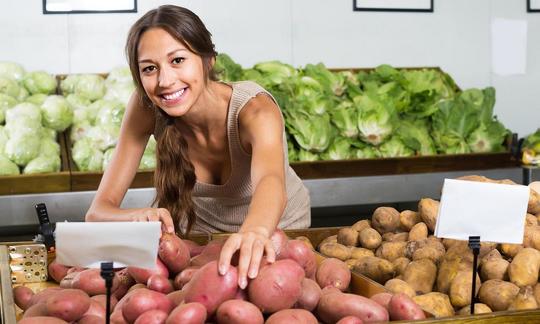

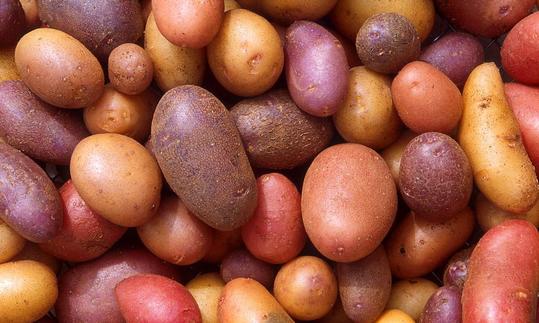

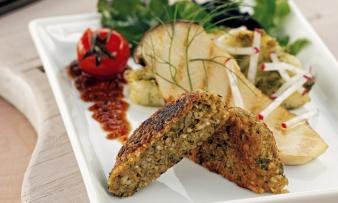
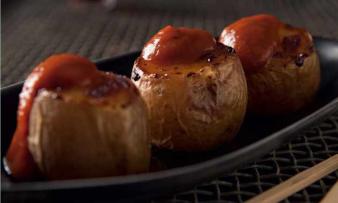
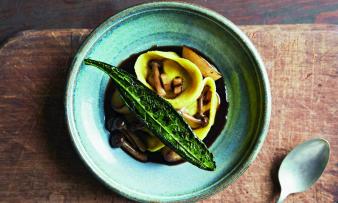





Comments